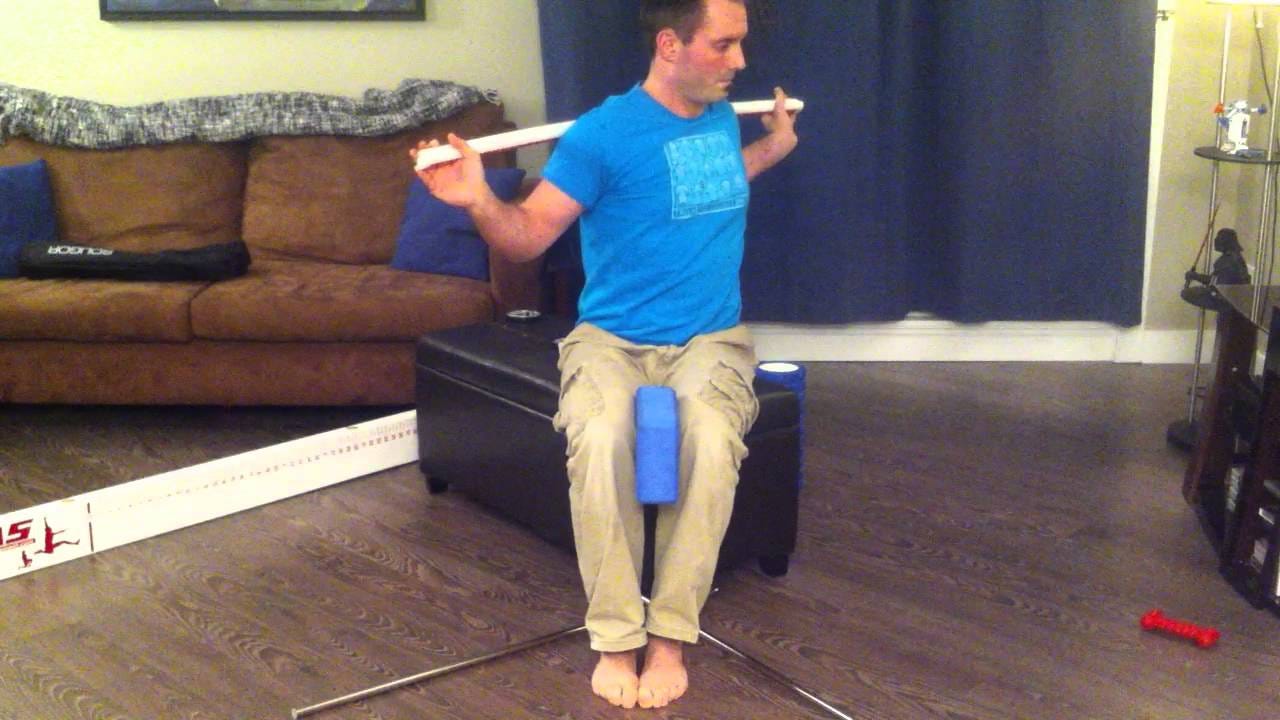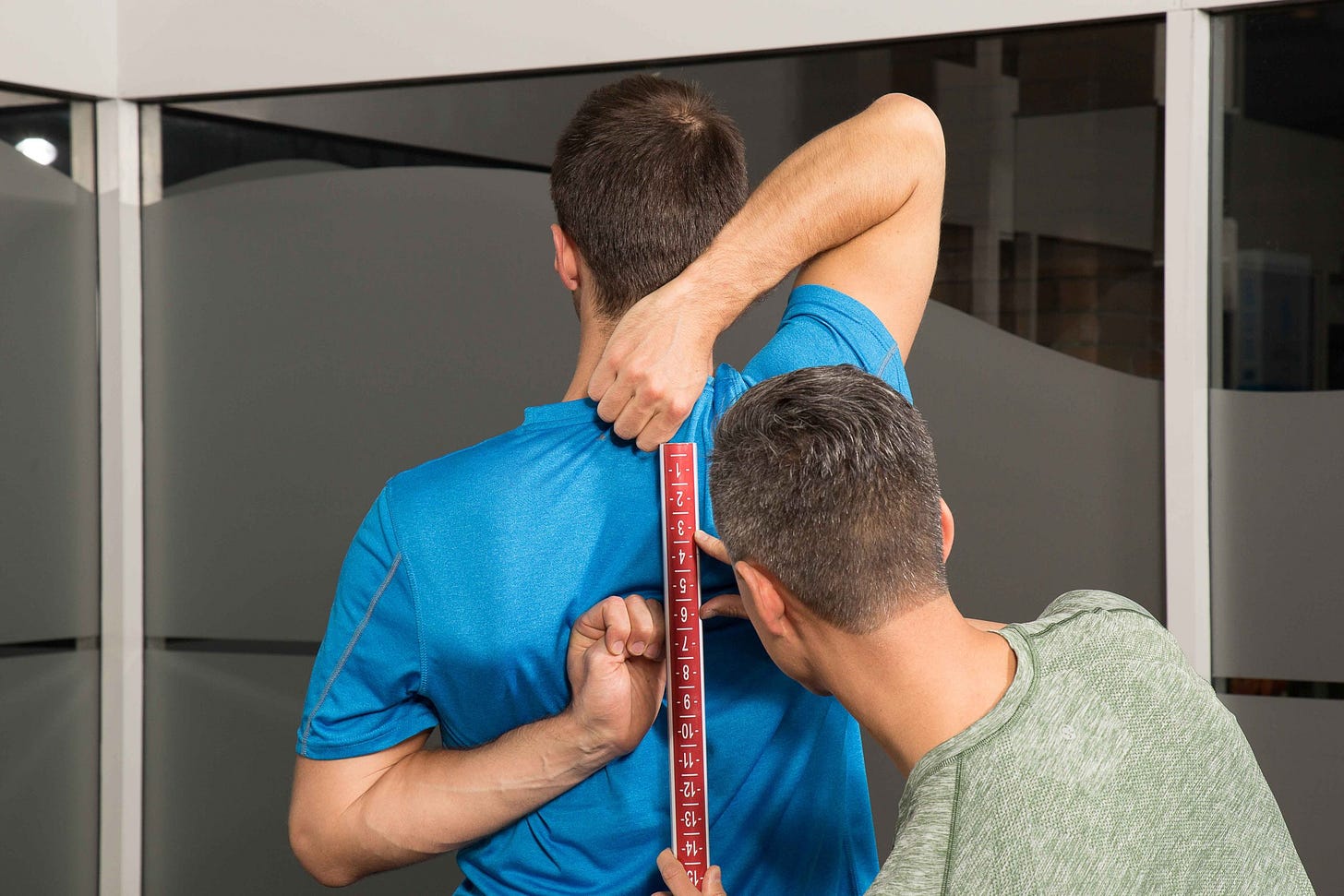
During the past several weeks, we have examined hyperkyphosis, its variations, and limitations placed upon individuals with the condition. We have also considered different interventions used to slow, or even reverse, hyperkyphosis. Katzman, Wanek, Shepherd and Sellmeyer (2010) provided methods of measuring hyperkyphosis. However, I would like to provide simpler methods of measurement. In a previous post, I provided a way of measuring thoracic spine rotation. In this post, I would like to provide a secondary test to measure other muscles that may be limited by, or contributing to, hyperkyphosis.

The seated thoracic rotation test is useful because it allows me to analyze restrictions near and about the spine. To avoid redundancy, please refer to my first post for more detail. However, several other muscles are associated with hyperkyphosis as well. The shoulder mobility test allows me to consider how muscles such as the latissimus dorsi, pectoralis major and pectoralis minor may be contributing to poor posture. Consider the latissimus dorsi; it adducts, internally rotates and extends the humorous. The pectoralis minor depresses and anteriorly tilts the scapula. Finally the pectoralis major adducts the humorous (Strom-Olsen, 2013). Thus, the shoulder mobility test assesses the range of these muscles opposite to their actions in a quick and simple fashion.

If the aforementioned muscles are short and/or tight, they will restrict movements in the opposite directions to their actions (i.e., reaching overhead).Whether these muscles contribute to hyperkyphosis or are affected by hyperkyphosis remains unclear (Katzman et al., 2010). However, shoulder muscle restrictions are often associated with rounded upper backs in either case (Katzman et al., 2010). Thus, it would seem imperative not only to assess thoracic mobility; we should also consider restrictions within the shoulder complex that may also be contributing to functional limitations.
Hyperkyphosis can limit an individual’s ability to carry out daily tasks. Left untreated, this condition could worsen. Our ability to affect change begins by measuring those muscles and joints directly affected by hyperkyphosis. Only then can we determine how and what interventions work.
References
Katzman, W. B., Wanek, L., Shepherd, J. A., & Sellmeyer, D. E. (2010). Age-related hyperkyphosis: Its causes, consequences, and management.Journal of Orthopaedic & Sports Medicine. 40 (6), 352-360.
Strom-Olsen, H. (2013). Functional anatomy of the shoulder complex. Part 2: Muscles, mechanics and pathomechanics.[Slideshow Presentation]. Retrieved from https://mycourses9.atsu.edu/bbcswebdav/pid-346755-dt-content-rid-7386881_1/courses/13-14WI-ONL-HM502-2-ASHS/Shoulder%20complex%282%29/Module%202%20-%20Presentation%20-%20Shoulder%20complex%2C%20part%202.pdf
-Michael McIsaac
